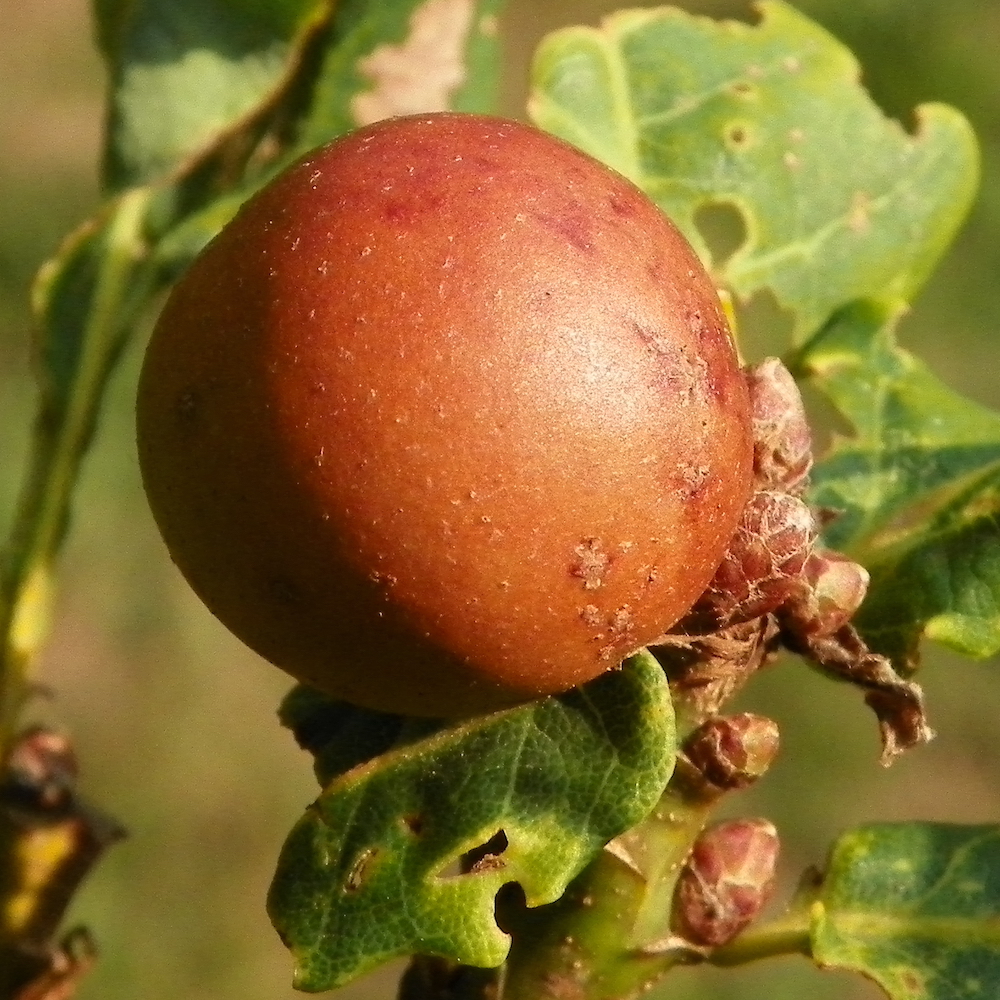
Oak Marble Galls, common on oak trees, are created by a parasitic gall-wasp.
Photo: AnemoneProjectors, CC BY-SA 2.0, via Wikimedia Commons
Scientific name: Andricus kollari (this is the name of the parasitic gall-wasp that induces the galls)
Other names: Bullet Gall, Oak Nut, Devonshire Gall
Clusters of Oak Marble Galls on the end of oak twigs might be a familiar sight, but the tiny parasitic wasp that forms them is not in fact native to Britain. Andricus kollari arrived in Devon from the Middle East in the first half of the nineteenth century, introduced in order to exploit the properties of the galls in cloth dying. It can now be found across the country.
Oak Marble Galls are superficially similar to Oak Apple Galls, the latter of which are induced by another species of parasitic wasp, Biorhiza pallida. Oak Apples are however spongier and grow larger than the hard spheres of the Marble Galls.
Andricus kollari has a complex lifecycle, producing alternate sexual and asexual generations, and parasitising native oaks and the introduced Turkey Oak at different stages. The dark brown wasps themselves are very small (≤2 mm), and hardly noticeable. In the early summer, females of the sexual generation lay eggs within the fresh buds of our native oak species: Pedunculate Oak (Quercus robur) and Sessile Oak (Quercus petraea) or their hybrids. The buds distort in shape (this is induced by chemicals released by the grubs), changing the normal cell growth to form round green galls with a central chamber housing a single developing female grub. The grub also uses chemical stimuli to get the host plant to divert nutrients to the gall. The Marble Gall matures to the familiar brown structure by August and the adult wasp emerges in early autumn, tunnelling a small hole through the gall. This is the asexual generation: the newly emerged gall-wasps lay their eggs in the leaf buds of Turkey Oaks, which eventually mature by the following spring into small insignificant galls. This time, the emerging adults are the sexual generation, and the cycle begins all over again.

Did you know…?
…More galls form on oaks than on any other species of tree. Of the 90 or so gall wasp species in Britain, 42 are parasitic on oaks.
…Oak Marble Galls contain tannic acid, which was once used for making ink and dying cloth. There is evidence that the ink has been used for some 1800 years.
More information and references:
Burnie, D., Burton, R., Furnell, D., Hume, R. and Marren, P., 2000. The Countryside Detective. Reader’s Digest Association, London.
Chinery, M., 2005. Collins Complete Guide to British Insects. HarperCollins, London.
Published: February 2014
Author: Amanda Scott
Photo: AnemoneProjectors, CC BY-SA 2.0, via Wikimedia Commons
